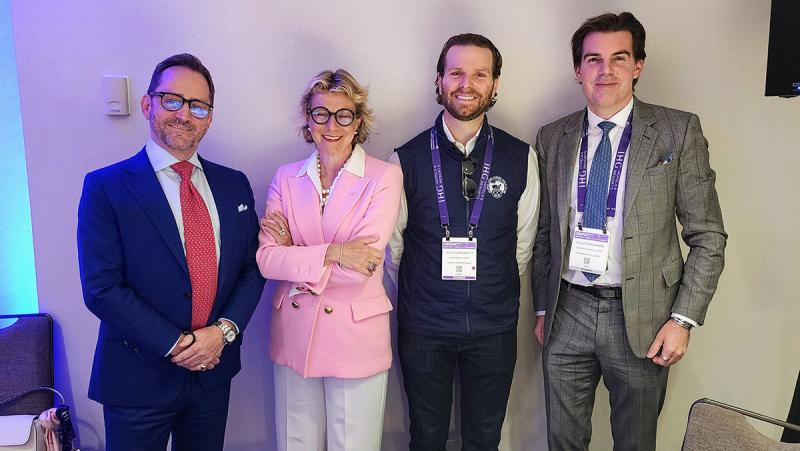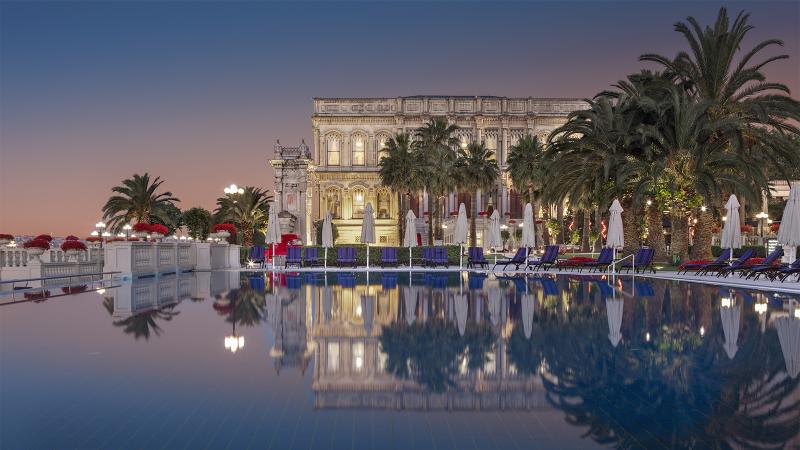When it comes to luxury travel, who sets the north star? That was the central question posed to a panel of luxury hotel developers and CEOs at NYU IHIF, taking place in New York City this week.
Not surprisingly, the customer’s wants and needs drive development—so long as it’s compelling for the stakeholders, according to Steve Sandercott, VP Hotels at Oxford Properties Group, a Canadian real estate developer and property manager whose portfolio includes four Fairmont hotels, a Park Hyatt and an InterContinental. He said that, to the best of their ability, companies should be gaining insight into what the customer of 10 years from now will want.
Simon Casson, who took over as CEO of Corinthia Hotels about 18 months ago, agreed that decisions—especially in the luxury sector—are “passionately and profoundly based around people.” He went beyond noting just the customers, however, adding that this ethos also extends to the internal team. Casson explained: “The only way I know to create luxury experiences is to develop this culture of servant leadership for the team—really believe in the people and see your primary role as a leader, to create and nurture an environment where those people can be their authentic, best self.”

Barbara Muckermann, the former president and CEO of Silversea Cruises and the current CEO of Kempinski Group for just over a year, expressed her agreement. “You cannot just grow [as a hotel brand] without having a real focus in the market because otherwise we're going to lose, as an industry, both the interest of the consumer and the interest of the travel advisors,” she said.
So, what is the market asking for? “One is this continuous trend of people really wanting that local experience,” said Philipp Weghmann, chief development officer for Preferred Travel Group. “That's been going on for a long time, but it's getting more and more intense every year.”
He also noted that sustainability is increasingly important to consumers, citing a Booking.com report that said traveling more sustainably was important for 84 percent of travelers. While Weghmann felt this likely isn’t the top priority among even these travelers, he said that isn’t stopping Preferred Travel Group from anchoring itself in the market with its Beyond Green brand. As more and more people come around on sustainable travel (and living) choices, Preferred is hoping to tap into that niche segment “that’s really not served by any hotel collection brand.”

Both Sandercott and Casson agreed that wellness is trending up. “For me, there’s three parts to wellness: how you sleep, what you put in your mouth and how you move,” explained the latter. To meet each of these criteria, Corinthia makes sure it has quality mattresses, black-out curtains and air purification systems in the rooms, as well as the ability to move around in the accommodations with yoga mats and free weights, not to mention proper food and beverage offerings at the restaurants to support wellness.
Sandercott added that locally inspired experiences—especially on-property—and multigenerational travel round out the three biggest trends he’s seeing.
Standing Out in a Crowd
Each of the executives also brought up the importance of branding. With so many new hotel brands popping up seemingly each quarter, it’s hard to keep track of them all, let alone know what makes each distinct. Speaking about herself, Muckermann said, “If someone who is actually paid to understand an industry still hasn't figured it completely out after a year, how can we ask a travel advisor the same?”
“It's just so incredibly difficult to build a global brand and then also be really relevant in each of the different markets,” added Weghmann. “In each continent, you have to do it a little bit differently, and then you end up not having a global brand anymore; you end up having different collections. Then you might as well make it all independents and have them under an umbrella, like Preferred.”
Building on that, Muckermann said, “I think the key—as with most things in life—is really knowing what you stand for and who you're for. The biggest mistake, that in hospitality sometimes we tend to do, is to say we are there for everybody. A brand only exists if some people don't like it.”

But how do you determine what the brand should represent? Casson, who was tasked with taking Corinthia from a “founder-led brand to a founder-inspired brand,” says defining (or, in his case, reshaping) what a brand stands for can be a challenge. It shouldn’t just come from “25-year-old McKinsey consultants,” nor should a brand “be defined solely by what Simon thinks it should be.” The conversation should both include market research and the insight of industry veterans—in addition to travel advisor input, said Casson.
Can Luxury Exist at Scale?
That all said, how do you then develop a brand at scale and remain a luxury experience?
The answer is “not easily.”
Oxford Properties Group has five hotels in its portfolio that represent a total of 2,500 rooms, which is “an enormous scale for the level of luxury we operate in,” according to Sandercott. He added that “bringing a curated, boutique-style service to that scale of operation is quite challenging.”
Casson went a step further to say, “scale is absolutely an enemy of ultimate luxury and quality,” also noting that it’s an inevitability. Along those lines, he explained that Corinthia’s board told him they wanted to reach 100 hotels in 10 years, but he wouldn’t take the role with that ambition. Seeing 25 to 45 as a more reasonable goal, Casson said, “there is a certain scale, I believe, within which you can manage luxury.” He related this to his earlier message about the importance of his team, saying he wants to know the people in the hotels and have a presence at each property. Growing too large would prohibit that.

Combatting this equation, simply, are the commercial goals of the business. Whether it’s privately or publicly held, the commercial aspirations dictate growth. In the end, Casson said, it comes down to the shareholders/principles deciding the balance between “remaining very special versus driving growth.”
With that in mind, Muckermann noted that “scale is necessary.” Simply put, the more revenue a company has, the more money it will have to spend on sales and marketing. Echoing her earlier sentiment about branding, she said that “unless you have enough firepower, there is no way you can have your brand coming out of the clutter.” Coming from Royal Caribbean Group (the fifth largest travel company in the world), Muckermann said, “you really see how scale helps.” For instance, “You cannot market a brand in North America with less than $100 million a year.”
Preferred Travel Group comes from a different angle since it doesn’t own or operate any of the properties in its collection, “so our marketing budget its not $100 million, sadly,” Weghmann joked. For them, despite being 600 hotels strong, B2B marketing has been key. But when it comes to growth, there are more stakeholders to consider for Preferred: not only must its own P&L be considered, but the owners of the hotels.
At the end of the day, luxury’s “north star” may look different depending on which stakeholder is holding the compass—but it should seemingly be a combination of the guest, the travel advisor, the shareholder and even the CEO. But one common thread emerged: genuine luxury hinges on a clear mission, cultural authenticity and valuing guest experiences, sometimes above expansion. In an increasingly noisy landscape, it’s the brands that know exactly who they’re for—and who they’re not for—that stand the best chance of shining through.
Related Articles
The Leading Hotels of the World Unveils Summer 2025 Collection
Luxury Travel Advisors Remain Optimistic Despite Market Jitters
NoMad Picks Up Global Steam—and a New Singapore Hotel
Luxury Travelers Crave Unique, Authentic Experiences: Preferred